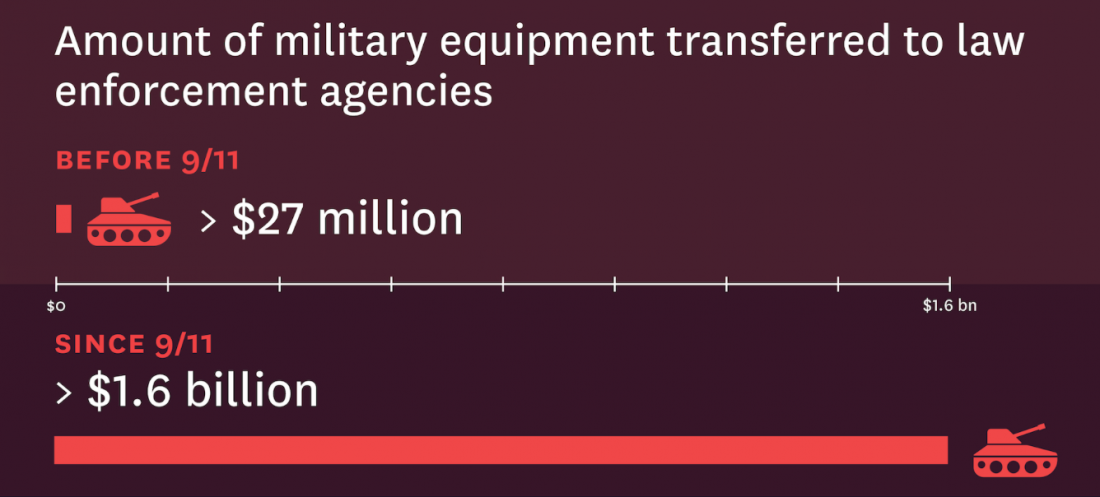Social & Political Costs

The post-9/11 wars intensified police militarization in the U.S.
Costs of War research documents the social and political costs of U.S. war and militarism. These include the domestic effects of U.S. wars on populations at home.
After the 9/11 terror attacks in the U.S. on September 11, 2001, U.S. policymakers chose to respond with a war, first invading Afghanistan and then, two years later, invading Iraq. Alternatives to war were scarcely considered. Over two decades later, U.S. counterterrorism operations span the globe and continue to have lasting costs. Many of the alternative – historically far more effective – paradigms for addressing the problem of terror attacks are still available to U.S. policymakers.
Today, U.S. government rhetoric frames security threats from China and Russia as the main reason for the sky-high military budget, but this rhetoric is often characterized by threat inflation.
U.S.-led wars have had devastating social and political consequences in the war zones. In Afghanistan, the post-9/11 war shattered an already struggling economy, leaving most Afghans facing poverty and hunger. Today, many countries are conducting forced returns of migrants back to Afghanistan, and many returnees experience myriad challenges in reintegrating. In the aftermath of the U.S.-led war in Iraq, the Iraqi government fails to provide basic human security for Iraqis.
At home and abroad, U.S. wars and military operations include many abuses of human rights and civil liberties. Government practices include indefinite detention, torture and mistreatment. Domestically, the post-9/11 wars dramatically expanded mass surveillance, eroding constitutional protections, and intensified police militarization. Marginalized and racialized groups, from Muslims and Arabs to Black and Indigenous organizers to migrants, have borne the brunt of these consequences.
The post-9/11 state’s focus on racialized groups may have ill-prepared the U.S. government to address rising white supremacist violence. The Department of Homeland Security (DHS) has focused on so-called "foreign terrorist organizations" despite the fact that what DHS calls "domestic terrorism," a broad category that encompasses white supremacist attacks, has been responsible for many more attempted attacks than have "foreign terrorist organizations" since 9/11.
The U.S. government borrowed trillions of dollars to pay for the post-9/11 wars at the same time that it instituted tax cuts, a pattern which seen in historical perspective is predicted to lead to higher levels of social inequality in the U.S.
Worldwide, since the 2000s, national governments and terrorist groups have found ways to curtail conflict coverage through myriad means, including repressive policies and killing journalists. Not only do local reporters face great risk, standing alone in the face of extraordinary violence; this also impairs news coverage and, as a result, the worldwide information ecosystem.
U.S. pop culture promotes beliefs that support militarism, often glorifying combat while obscuring the deadly realities of war. The Pentagon influences cultural products, from movies and video games to sports, normalizing the military’s central purpose — war-making — by framing it as a shared value. This forestalls reflection about the choices behind the use of the U.S. military, the treatment of military personnel, and the consequences of U.S. militarism.
READ MORE >
GLOBAL EXPANSION OF COUNTERTERRORISM >
HUMAN RIGHTS AND CIVIL LIBERTIES >
(Page updated as of June 2025)

